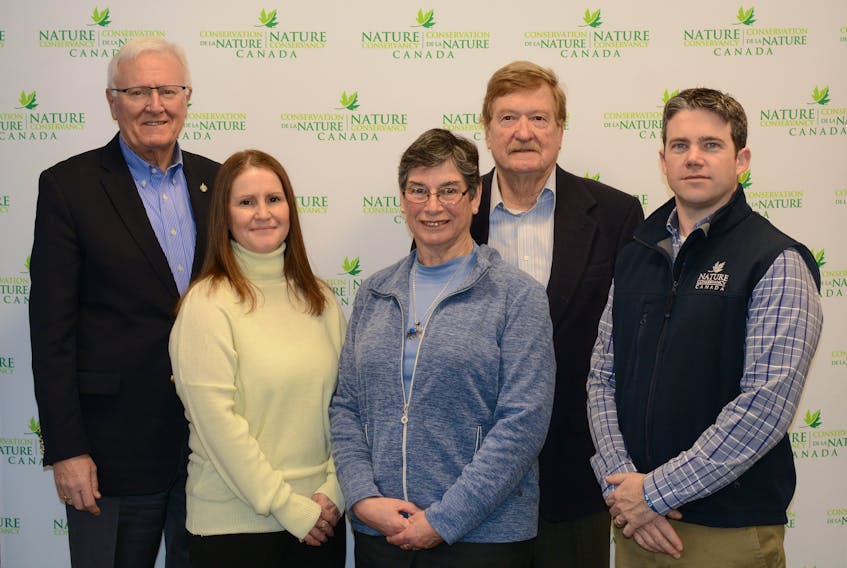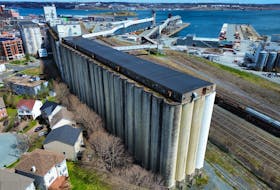AMHERST, N.S. – Thanks to a land donation in Halls Hills, near Sackville, there is more progress for one of the Maritimes most vital conservation corridors.
The Nature Conservancy of Canada (NCC) has protected an additional seven hectares (18 acres) of mature forest and wetlands on the Chignecto Isthmus, the narrow link between New Brunswick and Nova Scotia.
The new addition is the second property on the Chignecto Isthmus donated to NCC by the late Daniel Lund of Sackville and will help provide an important link between land already conserved by NCC and the Tintamarre National Wildlife Area, managed by Environment and Climate Change Canada.
Speaking on behalf of Dominic LeBlanc, Member of Parliament for Beauséjour, Bill Casey, Member of Parliament for Cumberland-Colchester, noted during a special ceremony in Amherst Monday morning that preserving additional land on the Chignecto Isthmus in New Brunswick will further enhance important wildlife protection measures in the region.
“On behalf of my colleague the Minister of Environment and Climate Change, Catherine McKenna, I welcome the progress made here today. With partners like the Nature Conservancy of Canada, the Lund family, and Canadians throughout the country, we are working to double the amount of protected nature across Canada’s lands and oceans.”
Kenneth Lund said his late brother Daniel had a strong connection to nature throughout his life.
“My brother Daniel liked the quiet stream running through this property.
He would be happy to think of deer and moose drinking at his stream, and to know the land has been conserved according to his wishes, and will always remain its natural state.”
With this donation, NCC has conserved 1,390 hectares (3,440 acres) on the Chignecto Isthmus for its wildlife corridor, an ongoing conservation project to secure wilderness for moose and other large mammals. A key goal of the project is to help connect New Brunswick’s healthy moose population with Nova Scotia’s mainland moose population, which has been listed as endangered under the Nova Scotia Endangered Species Act since 2003.
Through donations and strategic acquisitions, NCC’s numerous conservation areas on the Chignecto Isthmus are helping connect existing federal and provincial conservation areas and secure a safe and permanent wilderness corridor for wildlife through one of the busiest transportation hubs in the region. If wilderness is not conserved on the Chignecto Isthmus, Nova Scotia risks becoming an “ecological island,” and the health and size of its wildlife populations will decline.
NCC’s newest conservation area in Halls Hills is mainly forest, with mature black, red and white spruce. Conserving forest cover here enables the movement of wildlife populations. NCC staff surveying the new nature reserve found evidence of snowshoe hare, white-tailed deer, black bear and moose. A small wetland in the nature reserve, along with extensive wetlands in the surrounding area, provide important habitat for many species of waterfowl and other migratory birds.
Conservation of this property was made possible by the generous donation of the Lund family and through funding from the Government of Canada’s Natural Areas Conservation Program. Additional funds were provided by the Crabtree Foundation and U.S. Fish and Wildlife Service under the North American Wetlands Conservation Act.









